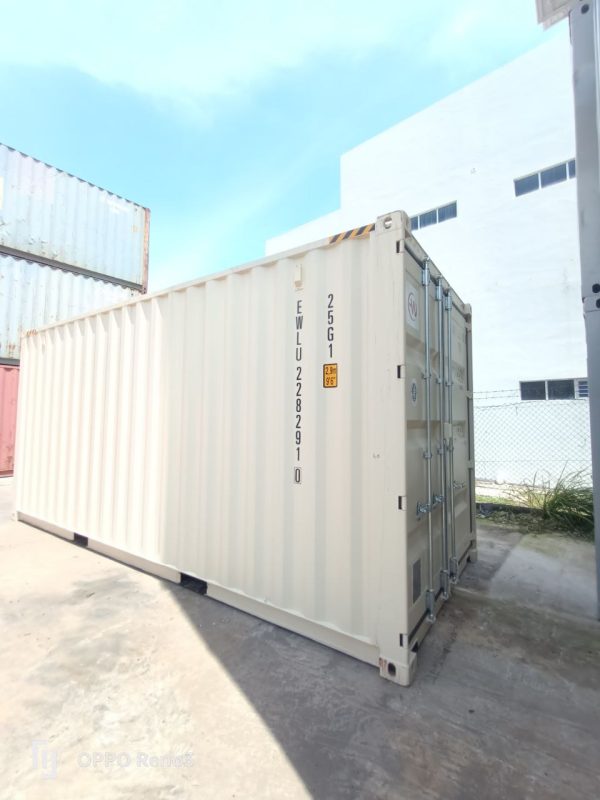How Shipping Containers Are Revolutionizing Disaster Relief Efforts

In recent years, shipping containers have emerged as a groundbreaking tool in disaster relief efforts, transforming the way humanitarian organizations respond to crises. These seemingly ordinary metal boxes, typically used for transporting goods across the globe, have proven to be versatile, durable, and incredibly effective in addressing the challenges posed by natural disasters and humanitarian emergencies.
The Appeal of Shipping Containers
One of the primary reasons shipping containers have become a staple in disaster relief is their inherent strength and durability. Designed to withstand harsh conditions during long sea voyages, these containers are resistant to extreme temperatures, moisture, and physical impacts. This durability makes them an ideal choice for temporary shelters, medical facilities, and storage units in disaster-stricken areas.
Moreover, shipping containers are modular by design, allowing for easy stacking and transportation. This modularity ensures that large quantities of aid can be mobilized quickly and efficiently, an essential factor when responding to large-scale disasters. Their standardized dimensions also facilitate seamless integration into various relief efforts, from setting up field hospitals to creating emergency housing.
Transforming into Emergency Shelters
One of the most notable applications of shipping containers in disaster relief is their use as emergency shelters. After a natural disaster, displaced individuals often face the challenge of finding safe and secure housing. Shipping containers can be repurposed into temporary homes, providing protection from the elements and a degree of privacy for affected families.
Organizations like the UN and various NGOs have pioneered the conversion of shipping containers into disaster relief housing. These containers can be outfitted with insulation, ventilation, and even electricity and plumbing, making them a viable alternative to traditional tents and makeshift shelters. The ability to rapidly deploy these shelters and their robustness in the face of adverse conditions are key factors in their effectiveness.
Field Hospitals and Medical Facilities
In the aftermath of a disaster, access to medical care is critical. Shipping containers have been adapted into mobile field hospitals and medical facilities, providing essential services to those in need. These containerized medical units can be equipped with the necessary equipment for emergency surgery, diagnostics, and patient care.
The container’s portability allows for quick setup in areas where traditional medical facilities are non-existent or have been destroyed. For instance, after the 2010 earthquake in Haiti, shipping container clinics played a crucial role in providing medical care to thousands of survivors. These mobile clinics were essential in addressing the immediate healthcare needs and significantly contributed to the overall relief effort.
Storage Solutions for Aid Supplies
Efficient storage and distribution of aid supplies are vital components of any disaster relief operation. Shipping containers offer a secure and organized solution for storing non-perishable goods, medical supplies, and other essential items. Their weather-resistant properties ensure that stored supplies remain in good condition, while their size and shape facilitate easy loading and unloading.
Furthermore, the use of containers helps streamline the logistics of distributing aid. By consolidating supplies in containers, relief organizations can better manage inventory and ensure that aid reaches the areas that need it most. This approach reduces the risk of loss or theft and enhances the overall efficiency of the relief operation.
Building Back Better
Shipping containers are not only useful in the immediate aftermath of a disaster but also play a role in long-term recovery and rebuilding efforts. Their adaptability allows for creative and sustainable solutions in rebuilding communities. For example, containers have been used to construct schools, community centers, and even permanent housing, offering a cost-effective and environmentally friendly alternative to traditional construction methods.
Innovative projects are exploring ways to integrate containers into permanent infrastructure. The use of repurposed containers in construction can help address housing shortages and support community development in disaster-affected regions. This approach aligns with the concept of “building back better,” ensuring that communities are more resilient and better prepared for future challenges.
Conclusion
The revolution brought about by shipping containers in disaster relief efforts highlights their remarkable versatility and utility. From providing immediate shelter and medical care to offering long-term solutions for rebuilding, these containers have proven to be invaluable assets in humanitarian responses. As the world continues to face natural disasters and crises, the innovative use of shipping containers will undoubtedly remain a critical component of effective and efficient relief operations. Their ability to adapt to various needs and withstand challenging conditions makes them a powerful tool in the ongoing effort to aid those in need and rebuild communities in the wake of disaster.

